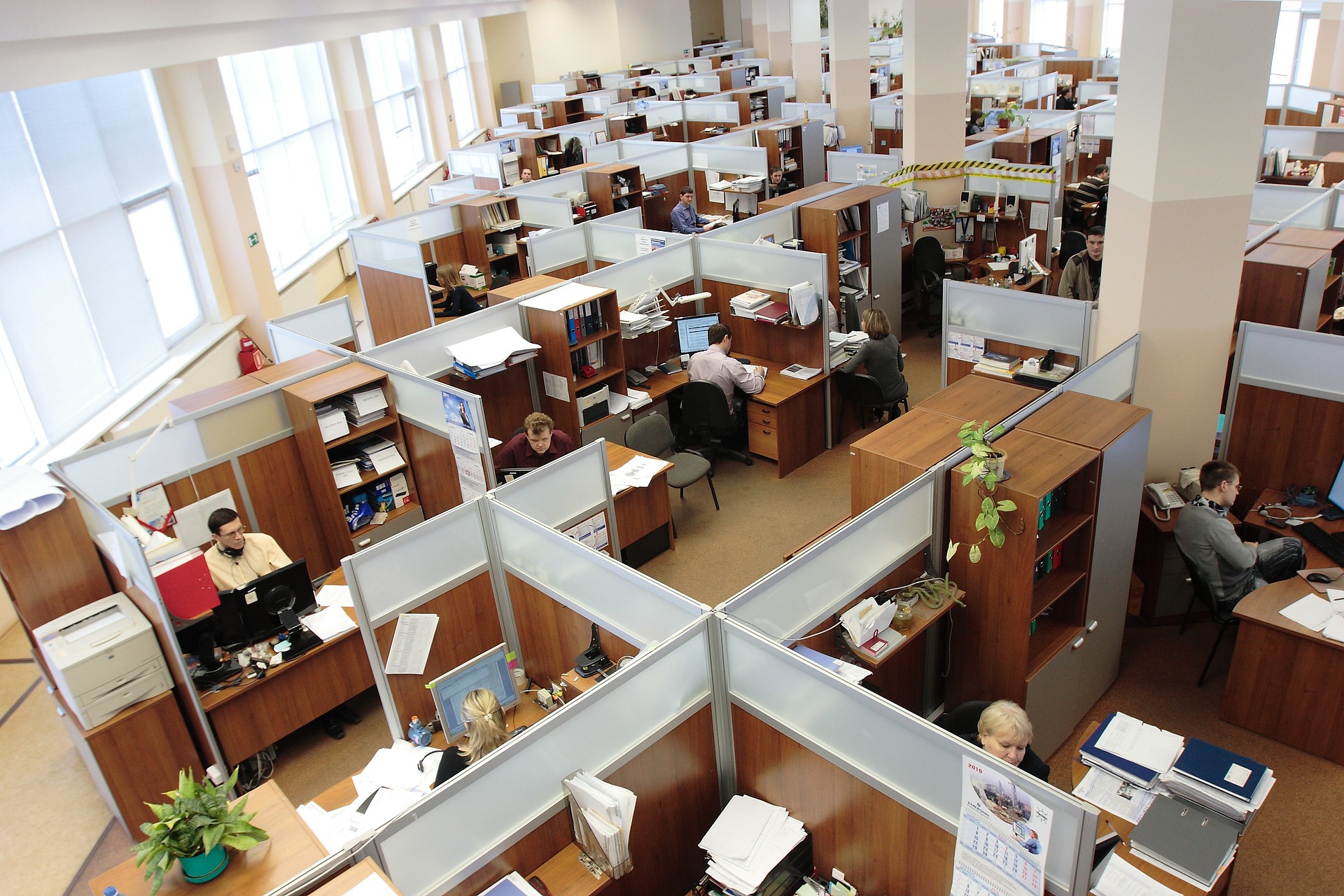
By Simon Trevarthen
Corporations love boxes. Whether is it org. charts with boxes that define and hem in your role, neat role and responsibilities, and worst of all, beige cubicles. Designed in 1964, with the intention of “empowering people,” cubicles are a symptom of all that is wrong with atomized, fragmented work cultures.
Chances are, if you have done any professional job, you have work in one. Three sides, beige and boring: they give the illusion of privacy, ownership of shared space, and roots in the office. However, standing up, you have seen the honeycomb of white-collar hutches. So ask yourself: did you enjoy working in one?
So why have cubicles endured, and will they survive the post-pandemic work environment? The easy answer is that cubicles are cheap. The smaller than a horse stall, you can pack hundreds of worker bees into a floor. Moreover, they are uniform; despite the office politics of who gets to sit near a window (yes, you know that happens), they give the illusion of equality and conformity. Lastly, they are a halfway house between an open concept office and closed offices.
However, do they inspire you to do your most extraordinary work? Are they conducive to creativity, collaboration and communication? Unfortunately, I think the answer is no.
More importantly, as companies – perhaps your company – plans the return to office work, maybe now is time to liberate us from the beige boxes!
Regardless of our desire, with are not to get into a teleport machine as traveling back to March 2020. The future of work will be a hybrid. Elements of the past fused with what we have learned on the journey.
We discovered there was so much can do remotely – so many tasks – that can be done on our kitchen table. We have telescoped a decade of workplace change into a single year. We proved that remote work could work we can be productive.
I believe remote work is here to stay because it has proven to be possible. However, it does have limits.
Work has always been a subtle mixture of individual and group activities. It is a dynamic cocktail – you need privacy to concentrate and collaborate to have the abrasive spark of creativity.
Over the last year, we have learned that Zoom, Teams, Hangouts, Webex etc. are all great technologies, but they also have their limits. For example, humans build trust through proximity. It isn’t easy to read our emotional and behavioural cues from the screen. Instead, we build rapport through the subtle interactions that fuse consensus, boundaries and build upon ideas.
In-person collaboration is what many crave—the organic tussle of ideas, stories and data that make the best meetings a joy. Seating around a whiteboard, co-creating something new, something fresh, something fun.
No one is dreaming of returning to the beige bullpen. Instead, our hunger is for the delight of unhindered human interaction and conversation. It is the collaboration spaces – meeting rooms, whiteboards and banter that make friends out of colleagues.
I think the office of the future, with carve away the floors of cubicles. Too expensive and unnecessary. Anyone who has driven past an office block has seen the empty towers of brightly lit but rows upon rows of cubicles over the last year. As companies seek to economize, the square footage alone will become prohibitive.
Yes, there will be prestigious floors to show off clients, fancy boardrooms, reception areas and big logos on the walls. However, companies’ creative hearts – where value is made- will be creative, collaboration spaces where we will harness our talents and think up new products, services, and experiences.
You can start this evolutionary process even before you make the march back into the office. As you plan a return to work, find opportunities to reignite your team’s passion in the creative aspects of collaboration. Eke out deliberate time to collaborate as a team. Rebuild a spirit de corp by enabling human connection through laughter, “cool” problems and realistic optimism that you can do the impossible.
As a leader, you have a responsibility to retie the sinews of your workplace together again. So many of us have fallen into the habit, reinforced by a year of isolation, of working autonomously. Instead, find the fusion points. Allocate work to teams more than ever. Place projects on the shoulders of groups to meld people together more so than in “normal” times. Collaboration, communication and cohesion nurture cultures by pulling people back together.
We are all creative. It is not sparkle dust that settles on the few. It is what engages us most, gives us the source of most tremendous pride. Let’s rethink our offices to embrace the kaleidoscope of creativity, co-creation and collaboration. Let’s not go back to the beige. Let’s think and work in spaces that spark our imagination, not boxes designed for conformity.
About the Author
Simon Trevarthen is the Founder and Chief Inspiration Officer of Elevate Your Greatness (EYG). EYG helps individuals, teams, and organizations unpack the secrets of success by becoming even better versions of themselves through dynamic keynotes, seminars, and workshops on innovation, inspiration and resilience.
check out: www.elevateyourgreatness.com
